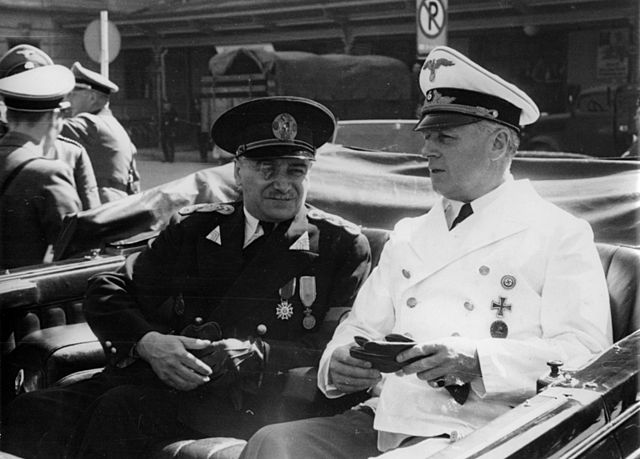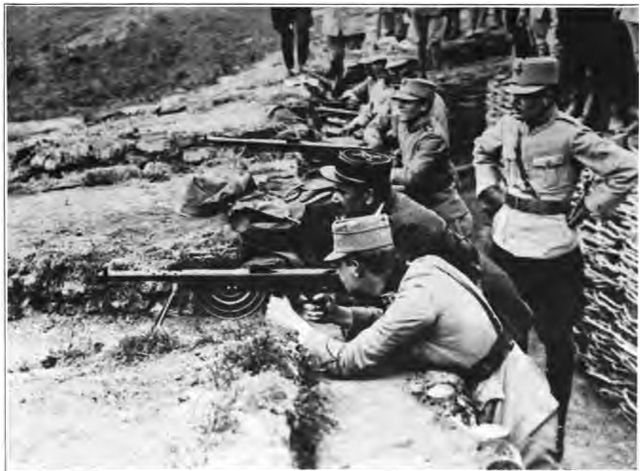Ion Gigurtu was a far-right Romanian politician, Land Forces officer, engineer and industrialist who served a brief term as Prime Minister from 4 July to 4 September 1940, under the personal regime of King Carol II. A specialist in mining and veteran of both the Second Balkan War and World War I, he made a fortune in interwar Greater Romania. Gigurtu began his career in politics with the People's Party (PP) and the National Agrarian Party, moving closer to the far right during the 1930s, and serving as Minister of Industry and Commerce in the cabinet of Octavian Goga. Shortly after the start of World War II, Gigurtu was affiliated with King Carol's National Renaissance Front, serving as Public Works and Communications Minister and Foreign Minister under Premier Gheorghe Tătărescu, before the territorial losses incurred by Romania in front of the Soviet Union propelled him as Tătărescu's replacement.
Ion Gigurtu
Gigurtu (left) with Joachim von Ribbentrop in Salzburg, July 1940
Carol II was King of Romania from June 8, 1930, until his forced abdication on September 6, 1940. As the eldest son of Ferdinand I, he became crown prince upon the death of his grand-uncle, King Carol I, in 1914. He was the first of the Hohenzollern kings of Romania to be born in the country, as both of his predecessors had been born in Germany and came to Romania only as adults. As such, he was the first member of the Romanian branch of the Hohenzollerns who spoke Romanian as his first language and was also the first member of his royal family to be raised in the Orthodox faith.
King Carol II, c. 1935
Crown Prince Carol of Romania in 1918.
King Carol I of Romania with his nephew the future King Ferdinand and grand-nephew Prince Carol.
Crown Prince Carol training during World War I with a Chauchat machine gun






